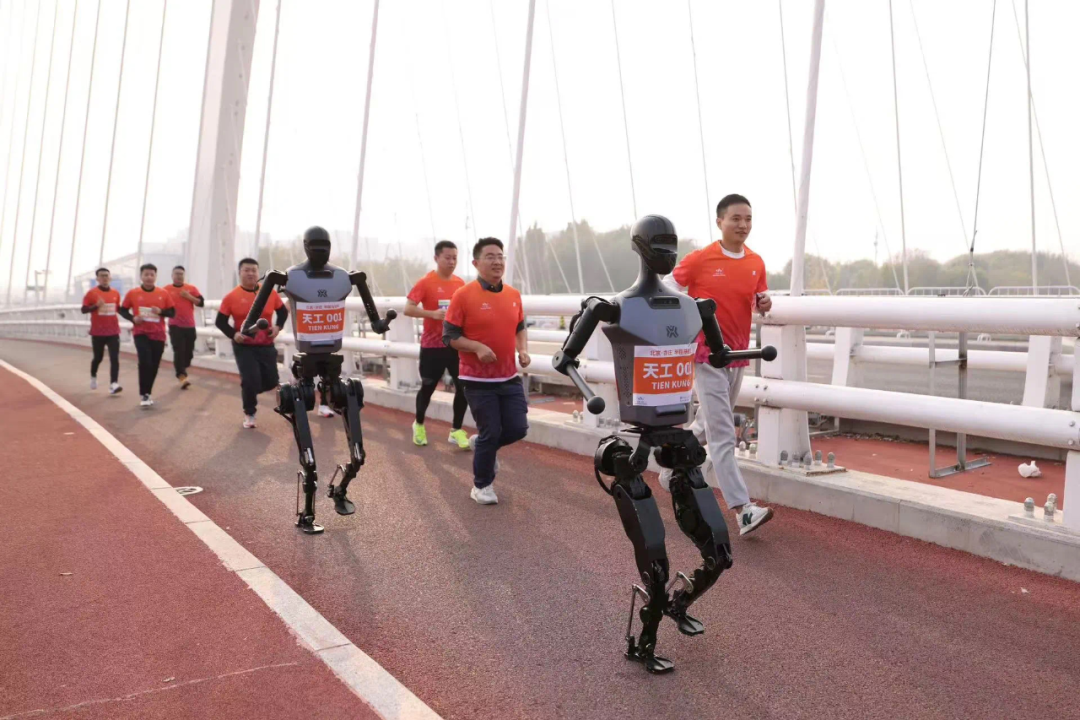The organization of this event serves not only as a concentrated review of the performance of humanoid robots in our country but also as a means to identify technical bottlenecks, gather resources, and seek feasible paths for technological breakthroughs.

Commentator from Guangming Online

Recently, a marathon event that has yet to take place has sparked heated discussions—the 2025 Beijing Yizhuang Half Marathon. The biggest highlight of this marathon is that the participants include not only regular human athletes but also humanoid robots launched by various organizations. Therefore, this event is also referred to as the “world’s first humanoid robot marathon.”

2024 Beijing Yizhuang Half Marathon, “Tiangong” transforms into a marathon “cheer officer”© New Beijing News
Allowing humanoid robots to compete alongside athletes breaks the traditional framework and rules of marathon events. In terms of competition format, the 2025 Beijing Yizhuang Half Marathon follows the principle of “synchronized registration, same track, simultaneous start,” where humanoid robots and athletes will start together at the starting line. To ensure safety between humans and machines, the entire race will use barriers or green belts to separate the robots and athletes, allowing them to share the same route but progress on independent tracks without interference.
In a marathon, the competition is about the athletes’ physical strength and endurance, while robots, being non-living entities driven by motors, naturally do not compete in terms of physical stamina. However, the over 21-kilometer half marathon presents a significant technical challenge for humanoid robots at this stage. During pre-race road tests, almost every robot underwent several battery swaps midway, and some robots experienced joint disconnections during uphill and downhill processes. These issues and data collected during the “run” have been meticulously recorded by the development teams, serving as a foundation for further improvements in humanoid robot technology.
Having humanoid robots run a marathon is less about human-machine competition and more about the self-iteration of machines. From a technical perspective, while humanoid robots can currently perform complex actions such as grasping, jumping, and even flipping, long-distance dynamic balance remains a cutting-edge topic, posing high demands on the core technologies of robotic motion control, environmental perception, and energy endurance. Organizing this event serves as a concentrated review of the performance of humanoid robots in our country and also seeks to identify technical bottlenecks, gather resources, and explore feasible paths for technological breakthroughs.
Humanoid robots are key carriers of embodied intelligence. This year’s “Government Work Report” proposed establishing a growth mechanism for future industry investment, nurturing future industries such as biomanufacturing, quantum technology, embodied intelligence, and 6G. Embodied intelligence refers to an embodied agent that can perceive the external world like humans through this “body” and make decisions and actions based on external information. From robotic arms, unmanned vehicles, and quadruped robots to bipedal humanoid robots, it is evident that embodied intelligence is continuously iterating and progressing towards intelligent agents with powerful thinking and action capabilities, with unlimited potential and development space in the future. If utilized effectively, it will play a significant role in fields such as intelligent manufacturing, smart healthcare, and smart elderly care.
From this perspective, humanoid robots “running a marathon” is also a lesson in the growth of embodied intelligence. Just like humans, from the stumbling steps of infancy to the swift strides of adulthood, there is always a gradual and continuous growth process; embodied intelligence is no different. By promoting the multi-scenario application of “embodied intelligence +” and summarizing experiences in practice to break through key core technological bottlenecks, we can surely strengthen the embodied intelligence industry, adding momentum to economic development and improving people’s livelihoods.
Source: Guangming OnlineAuthor: Commentator from Guangming OnlineEditor: Hao Yue